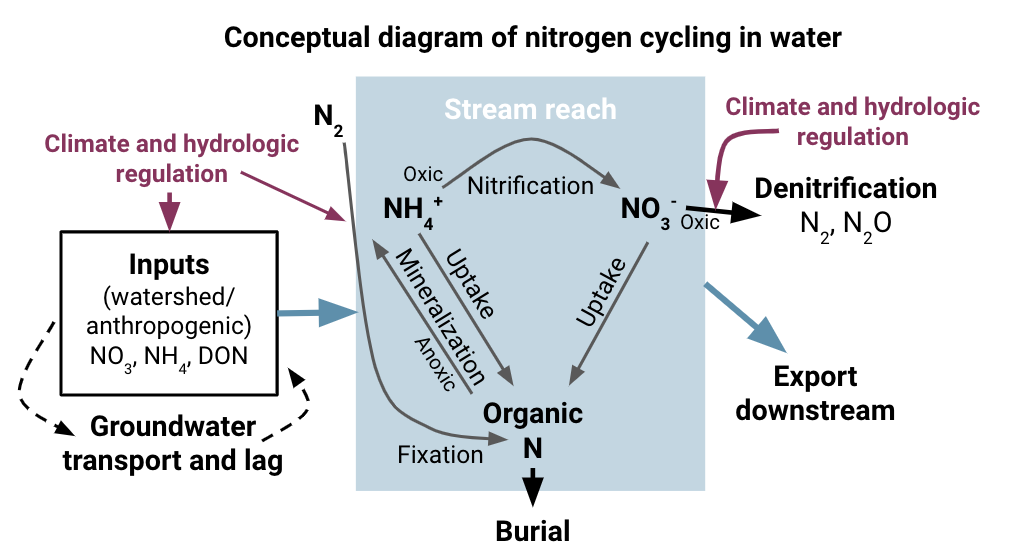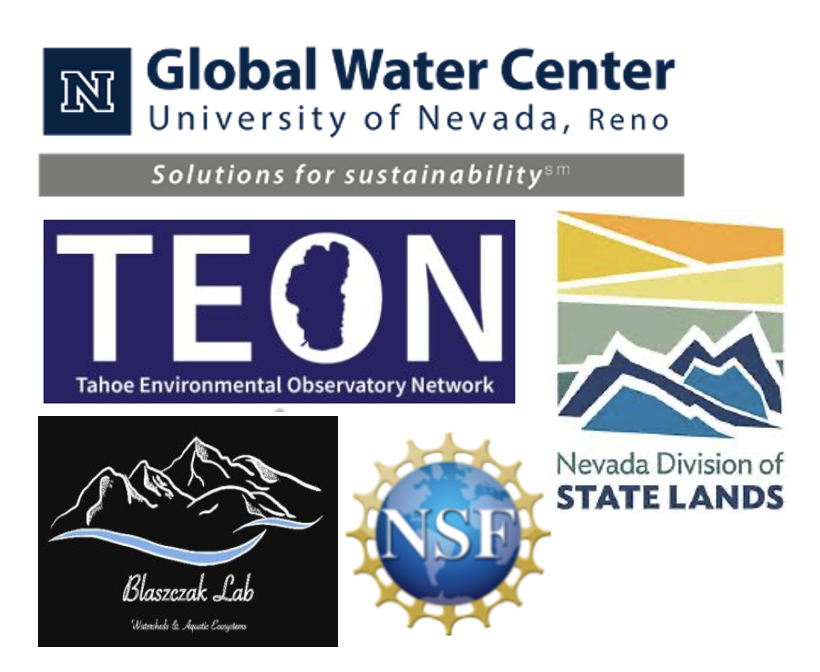Biogeochemical linkages between nitrogen availability and mountain stream metabolism
This project investigates how variability in snowpack accumulation alters the synchrony of hydrologic processes (e.g., peak flow, and the onset of baseflow) and biological processes (e.g., nutrient uptake, assimilation, and fixation) that control nitrogen availability and demand in two mountain streams. By comparing two streams that represent opposite ends of the spectrum in watershed size, modeled runoff, and precipitation accumulation within the Lake Tahoe basin (Nevada/California USA) over dry and wet years, we found the larger less shaded stream supported higher metabolism fluxes and exhibited more efficient inorganic nitrogen (e.g., nitrate and ammonium) assimilation. However, nitrogen assimilation and retention were severely reduced during the wet year due to the delayed onset of baseflow, which caused most available nitrogen in either stream to be transported instead of transformed.


This work is currently in reveiw. Data will be avaible on EDI soon.
Co-authors: Heili Lowman, Laurel Genzoli, Jasmine Krause, Adrian Harpold, Sudeep Chandra, and Joanna Blaszczak.
Special thanks to the Blaszczak field and laboratory team members (Link) Leon Katona, Rob Miller, Meredith Brehob, Helen Lei, Ian Halterman, Molly Ferro, and Keenan Seto, and (Dillon Ragar), who helped collect and process the survey data; The University of Reno’s Global Water Center (Link) and Chandra lab members (Link), especially Emily Carlson; Tahoe National Forest; and the residents of Glenbrook Nevada, especially Gary and Susan Clemons.
Funding for this work was provided by the National Science Foundation (NSF) award OIA-2019528 and the Nevada Division of State Lands. Kelly Loria was supported by an NSF Graduate Research Fellowship (2020000930863).

 Stream
Stream